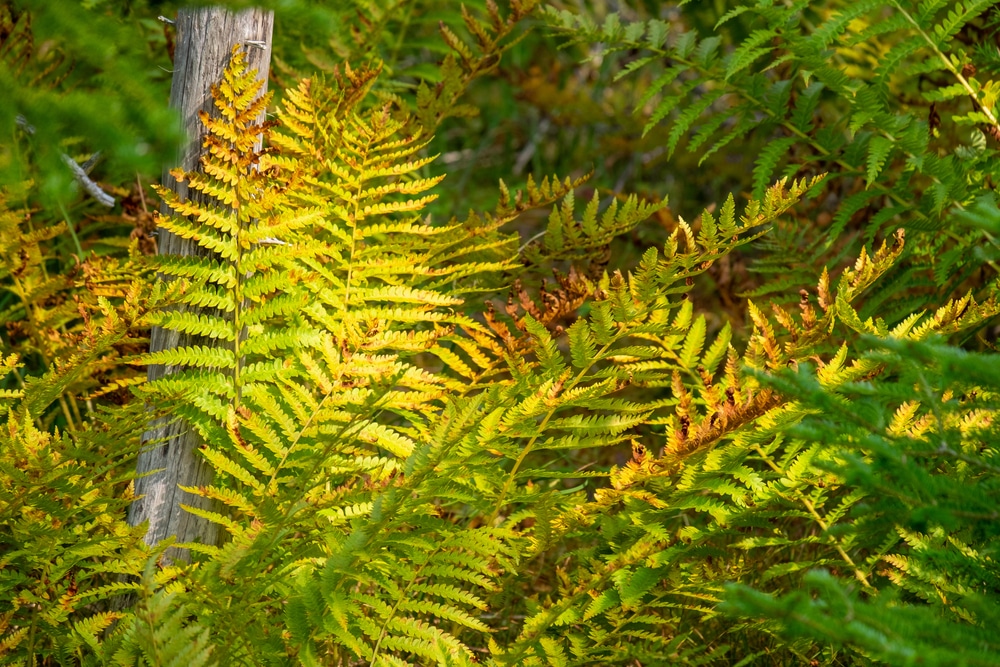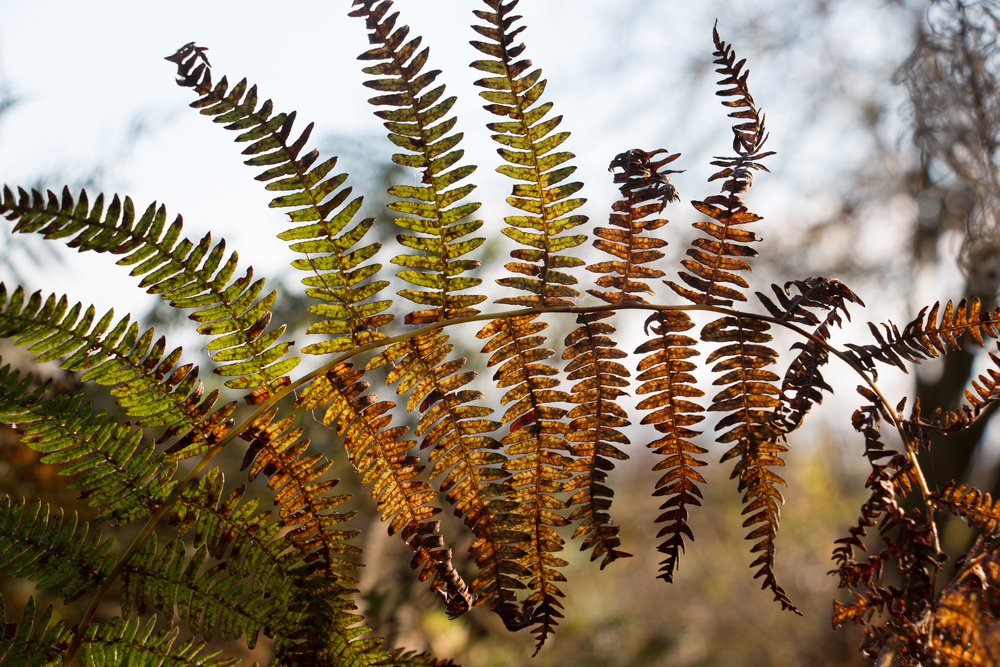Since ferns reproduce via spores instead of flowers, their green leaves attract people to them. Needless to say, if your fern is losing its lush color, you’re understandably wondering, “Why is my fern turning yellow?”
Why Is My Fern Turning Yellow?
We’ll give you the low-down on why your fern is turning yellow and what to do about it.
Too Little Water
Ferns thrive in wet conditions in the wild. Therefore, one of the biggest causes of them developing yellow leaves is a lack of water.
You should never let your fern’s soil dry out. But even if you water your plant regularly, doing so on top of their leaves instead of placing the water can at the soil’s level can cause the water to run off the plant, landing primarily on the ground where its roots in a pot can’t reach it.
Low Humidity
Not only do ferns require plenty of water in the soil, but they also need high humidity conditions. Without enough humidity in the air, their leaves will turn yellow or brown as they dry out.
Luckily, it’s easy to fix yellowing fern leaves from low humidity. Simply use a spray bottle to bathe your fern in a light mist once weekly. If you want to go above and beyond, you can also set up a humidifier in the room where you keep your plant.
Insect Infestation
Your fern’s lush green leaves serve as a buffet for many pests. Sadly, this will result in your plant becoming weak and its leaves yellowing. Some of the most common insects that attack ferns include:
- Mits
- Aphids
- Mealybugs
Complicating matters is the fact that ferns don’t hold up well with chemical-based pesticides. Therefore, we recommend sticking with natural remedies, such as rubbing neem oil or alcohol on the leaves with a cotton swab.
Too Much Water
Although ferns love water, too much can cause their leaves to turn yellow. So, you should water your fern with one to two inches of water per week. Furthermore, provide your fern with good drainage so excess water can escape.
Other factors impacting the amount of water your fern needs are soil type and whether you use mulch. Ferns growing in clay soil with a dense layer of mulch require less water than those in loose, sandy conditions.
Cold Temperature
Ferns can withstand cold temperatures, as they live in USDA zones as low as three. But to prepare for winter weather, ferns go into hibernation, causing their leaves to turn yellow or brown.
Such a situation is natural for ferns, and there’s no need to fix this “issue” if your ferns live outside. But if you have indoor ferns and the daytime temperature where you keep them drops below 65 degrees, you should move them to a warmer area so that they stay green.
Abundant Fertilizer
Fertilizer might sound like a positive thing for ferns, but using too much of it can cause its leaves to turn yellow. The reason for this is that excessive salt can burn the plant.
Should you wish to fertilize your fern without causing its leaves to turn yellow, consider applying half the amount of fertilizer that the bottle recommends. Furthermore, stick with only fertilizing your fern during its growing season, roughly April to September.
Sun Scorch
There’s a reason you often see ferns growing beneath threes in the woods—these plants don’t like direct sunlight. Therefore, if you place your ferns in a window, their leaves might turn yellow from too much sun.
Of course, balancing the amount of sunlight your fern gets is vital; without any sunlight, their leaves will become yellow too. So, indirect sunlight is the ideal situation.
Getting Your Fern Back to Green
By now, you can hopefully narrow down what’s causing your fern to turn brown or yellow. As long as you catch the problem early, you can expect your plant to return to its green state once you adjust its environment.

